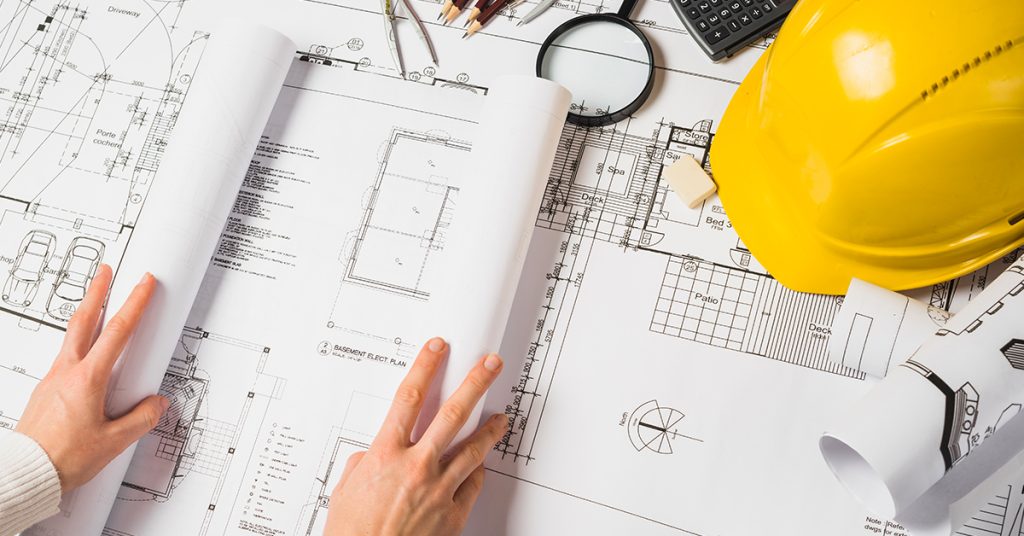Clients and homeowners are usually unfamiliar with construction terms that contractors and other building professionals might mention when discussing their future home. However, it’s essential for homeowners and clients to have knowledge of them to ensure that there are no problems that will arise as they’re building their property up to its completion.
Some laws and ordinances enforce strict measures on property boundaries, especially in residential areas. It’s important for contractors and homeowners alike to be aware of these terms and what they mean to ensure they are not breaking laws.
If you are a contractor or a home builder, it matters that you help your clients with the following terms to prevent future problems. Here are a few terms you ought to brief your clients on as you are helping them with their construction project.
7 Construction Terms Construction Professionals and Homeowners Should Know
Land Survey
This refers to a detailed inspection or study that gathers information through measuring in the field, observations, questionnaires, or research of legal instruments and data analysis. This will support the designing, planning, and establishing of property boundaries.
Property Survey
This type of land survey notes or depicts the position of boundaries regarding:
- Apparent improvements and features (including driveways, roadways, surface utilities)
- Locations of all boundary monumentation found or set
- Record easements and visible evidence of use
- Record and apparent means of ingress and egress
- Lines of occupation
- Deed restrictions referring to the location of buildings and other apparent improvements
- Unresolved conflicts with maps and record deed descriptions
- All apparent boundary encroachments
- Monumentation required to be set at all corners

Perimeter Survey
A Perimeter Survey is another type of land survey. Here, you map out the strip along boundaries with a minimum width of 15 feet or 5 meters. This survey aims is to document boundary locations regarding:
- Locations of all boundary monumentation set or found
- Apparent improvements and features
- Record easements and visible evidence of use
- Record and visible means of ingress and egress
- Lines of occupation
- Unresolved conflicts with maps and record deed descriptions
- Deed restrictions pertaining to the location of buildings and other apparent improvements
- Apparent boundary encroachments
- Monumentation required to be set at all corners
Holdback
Holdbacks in contracts are one way to protecting the buyer or the client by holding back a part of the invoice until the work is complete. Clients should be informed of holdbacks, as these may complicate things for everyone involved in the project.
Easement
An easement is a legal designation that allows entities or individuals to use portions of your property – either to build on or to use for physical access – even though you own the property. Easements usually come in different types, with the most common include driveway easements that allow access to a property as a driveway. Another kind, the sidewalk easement, allows people to walk in front of your property—provided they stay on the sidewalk. Construction professionals should inform their clients about easements, so they can adjust the design of their building or property as needed.

Encroachment
Encroachment is when a neighbor builds something that is wholly or partially on your property, or the property of your client, without an agreement. Illegal encroachment problems may drag on for years, and might allow your neighbor to claim adverse possession of the segment that they built over. Although you can deal with this legally, be prepared for adverse possession claims that an encroachment might claim against them.
Right of Way
The right of way allows another individual to travel through your property. This benefits another parcel of land or another person. The right of way allows and grants access to anyone who may need to travel through the land or property. If a portion of your land spans on public land, it will be considered as a right of way and will allow the public to pass through the property.
These are just some terms that a contractor should inform their clients about. It’s essential that clients are aware of these terms, so they know any legalities or adjustments that they may have to make to their homes. It’s the responsibility of the contractor or the homebuilder to keep their clients informed so that they do not run into unwanted situations that may involve legalities. Likewise, it helps for the homeowner or the client to know of these things so that they don’t have they can hold their own against legalities or encroachers that may come to claim their property.
Do you want to see more content like this in the future? Subscribe to Pinoy Builders for FREE today and stay in the loop for the latest news and updates on the Philippine construction industry.
Sources:
- AspireID. (2019, April 9). 25 Essential Real Estate & Construction Terms You Should Know When Building a Custom Home. Sheffield Homes. https://sheffieldhomes.com/sheffield-homes-blog/25-essential-real-estate-construction-terms-you-should-know-when-building-a-custom-home/
- Land Surveying: The Process and the Tools. (n.d.). EngineerSupply. https://www.engineersupply.com/land-surveying.aspx
- TYPES OF SURVEYS. (n.d.). Philsurv Geodetic Services. https://www.philsurv.com/types-of-surveys
- Wallender, L. (n.d.). Can You Build on a Property or Utility Easement? The Spruce. https://www.thespruce.com/building-on-an-easement-4125929
- 45 Construction Terms & Concepts All Architects Should Know. (2018, July 16). ArchDaily. https://www.archdaily.com/898221/45-construction-terms-and-concepts-all-architects-should-know
- Understanding Construction Holdbacks and the Potential Tax Implications. (2021, February 16). BDO Canada. https://www.bdo.ca/en-ca/insights/industries/real-estate-construction/construction-holdbacks-tax-implications/#:~:text=In%20the%20construction%20industry%2C%20holdbacks
- Dehan, A. (2021, October 1). Encroachment: What Is It and What Can You Do About It? Www.quickenloans.com. https://www.quickenloans.com/learn/encroachment










